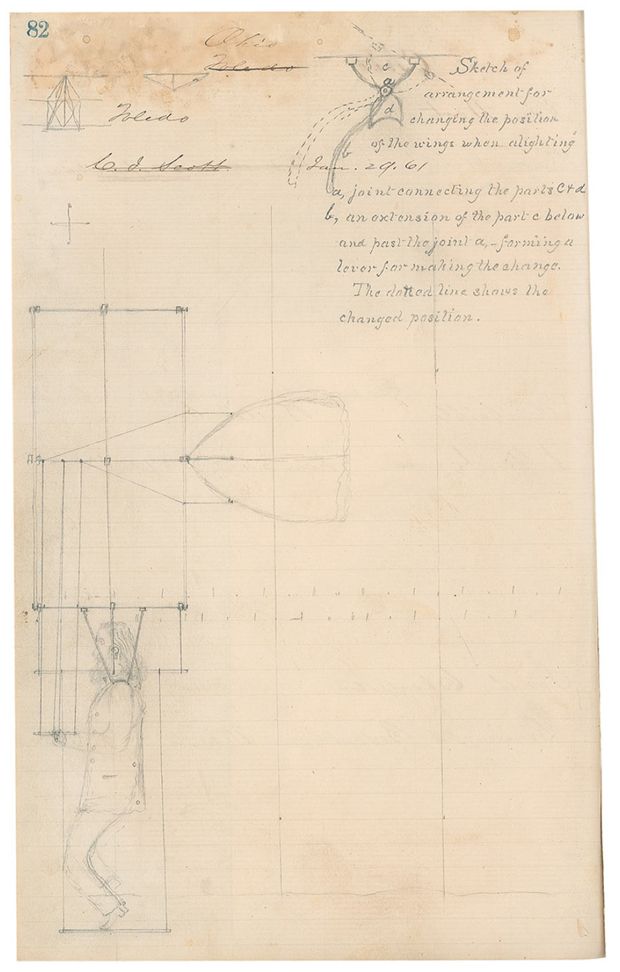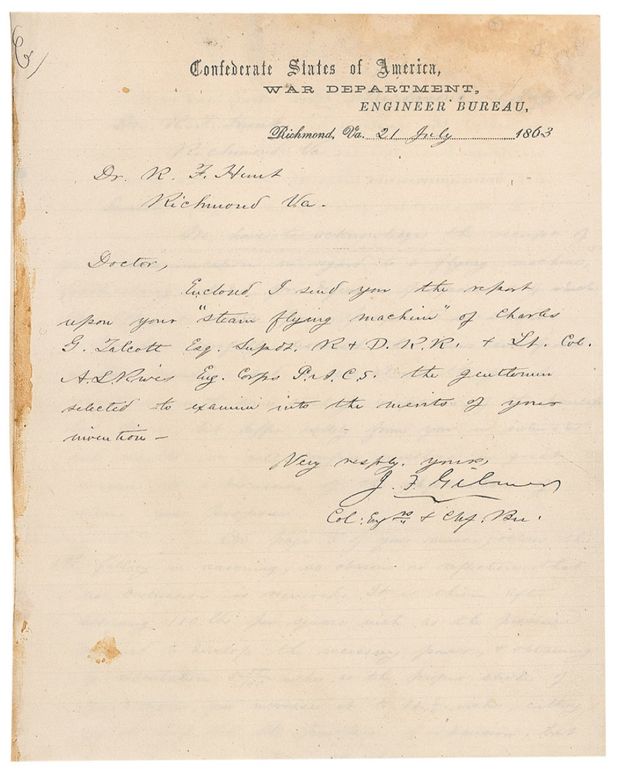Finley Hunt’s Flying Machine
Designs for a fanciful Civil War airplane fetch big bucks at auction.
/https://tf-cmsv2-smithsonianmag-media.s3.amazonaws.com/filer/hunt-flash2.jpg)
Halfway through the Civil War, a dentist in Richmond,Virginia, of unknown engineering ability, theorized that he could build an airplane. Dr. R. Finley Hunt thought his steam-powered vehicle could help the Confederacy. So he wrote to President Jefferson Davis of his “invention of a flying machine intended to be used for war purposes in the existing conflict.”
The letter is part of a 286-page collection of Hunt’s personal papers that sold at auction last week for $23,309. The papers include sketches of Hunt’s design for a flying machine, newspaper clippings, and letters between him and Confederate leaders.
In 1863, Davis referred Hunt to Robert E. Lee, who in turn directed him to Colonel Jeremy F. Gilmer, Chief of the Engineer Bureau for the Confederacy. Gilmer appointed a board of engineers to review Hunt’s idea, but the report came back unfavorable.
Hunt later appealed to Davis that he needed the help of “a machinist in the armory” to build and test his flying device. He believed that with some mechanical assistance he could succeed, and that the reluctance of the board to endorse his ideas came from a misunderstanding of his concept. In its report the board said it “differ[ed] widely from [Hunt] in estimates and results [but] will confine ourselves in great measure to a discussion of the application of steam.”
Steam-powered flight was not a unique idea at the time, but the weight of a steam engine proved a challenge for ever getting off the ground. “Hunt didn’t have a snowball’s chance of flying,” says Tom Crouch, a senior curator for aeronautics at the Smithsonian’s National Air and Space Museum. Nor was Hunt alone in thinking about aerial vehicles, even though his technical design was flawed. “R. Finley Hunt was in good company,” says Crouch. “He was by no means the only guy dreaming of conquering the enemy with a flying machine during the Civil War.” Richard Oglesby Davidson also tried to interest the Confederate War department in his ornithopter, which had beating wings and looked like “an American Eagle,” according to Crouch. On the Union side, Edward Serrell, Chief Engineer of the Union Army of the James, got pretty far in building a full-scale model of a flying machine.
As it turned out, only balloons were used during the war, and only in a limited way, for reconnaissance. Proposals to drop bombs from balloons got no further than the patent office.
As for Hunt’s papers, which sold to an anonymous American collector, little is known about their whereabouts for the past 150 years. University Archives in Westport, Connecticut had bought them from a rare book dealer before consigning them to RR Auction of Amherst, New Hampshire for last week’s sale.

